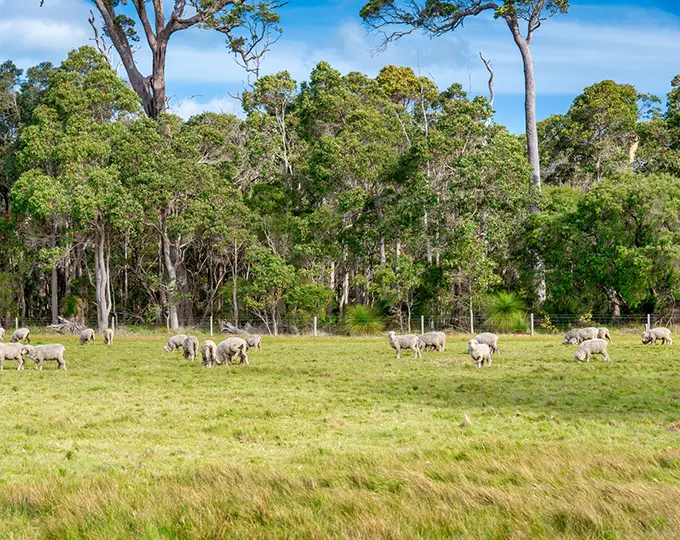OVERVIEW
The Lifecycle of Environmental Planting: From Planning to Carbon Credits
This page outlines the key steps in a typical project lifecycle, including:
- What’s involved in the planning stages
- Information required for registration with the ACCU scheme
- The stages of project implementation
- Ongoing management, including measurement, reporting and auditing
- Assessment, issuance and registration of ACCUs
DISCLAIMER: This general information has been prepared by Landcare Australia (AR 1315198 of Australian Carbon Traders Pty Ltd AFSL 425512) for farmers and landholders who are eligible to be treated as wholesale clients. It does not take into account your objectives, needs or situation. ACCUs and derivatives are financial products. While we have outlined common benefits, risks and constraints here, we strongly recommend you seek independent financial and legal advice before acting on any decision to invest. Click here for further regulatory information.
Stage 1: Planning
The planning stage of your Environmental Plantings project will typically include:
- Setting objectives
- Project feasibility
- Assess eligibility
- Design and planning
Is an Environmental Plantings Project right for you?
During the planning stage, you will need to determine whether an Environmental Plantings project is right for your situation. You will define the project objectives, determine project feasibility, assess risks and plan all activities to run the project.
Feasibility assessment
After you have set your objectives and have a rough understanding of the area of land for your project, additional assessment is required to determine if the project is feasible. A feasibility assessment will consider:
- Eligibility and suitability of the proposed area
- Identify your long-term business plans, including succession planning and future land sales.
- Analyse your current farm operations including comparative gross margin of areas
- ACCU estimates over the project lifetime
- Mapping of the site
- Financial and Risk Analysis
- Scenario comparisons – comparing management, yield and cost scenarios
- Advice to enhance returns and support on farm plan and business case.
- Define the objective of a reforestation project on your land. Objectives may include:
- creating carbon credits for the business, as an asset, and for income.
- creating shade and shelter for stock.
- Reducing erosion and soil loss.
A feasibility assessment consists of two components – a desktop analysis and a property site visit.
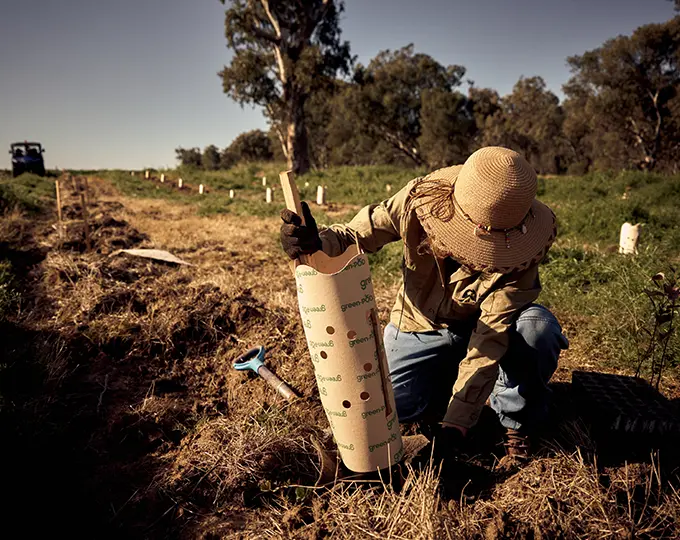
Desktop analysis
No two properties are identical, and each project will have different site characteristics that yield different outcomes. Due to these variations, it’s essential to seek expert advice regarding the viability and potential of a prospective site before proceeding with project establishment.
A desktop analysis is the first step in determining if your property has eligible land for an Environmental Plantings project. If engaging Landcare CarbonSMART as a project developer, landowner consent will be sought to undertake a desktop analysis. A detailed report will be prepared for the landowner to form the basis of a property site visit. A desktop analysis includes:
- Geospatial (GIS) analysis
- carbon assessment and ACCU/hectare
- eligible planting areas (i.e. evidence that there was no forest cover in the project area in the 5 years)
- topography
- soils
- vegetation types
- Risk assessment (fire, flood, herbivores, weeds)
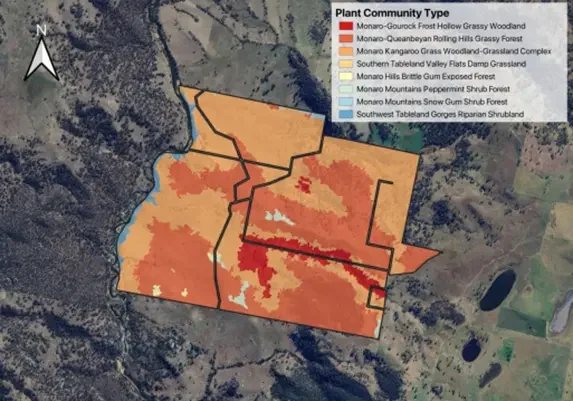
Property visit
A property site visit is required to ground truth the results of the desktop assessment and get to know you, your farm operations and refine the objectives of a reforestation project. Property visits provide important data to complete the feasibility assessment.
Multiple property visits may be required depending on the complexity of the property and planting sites.
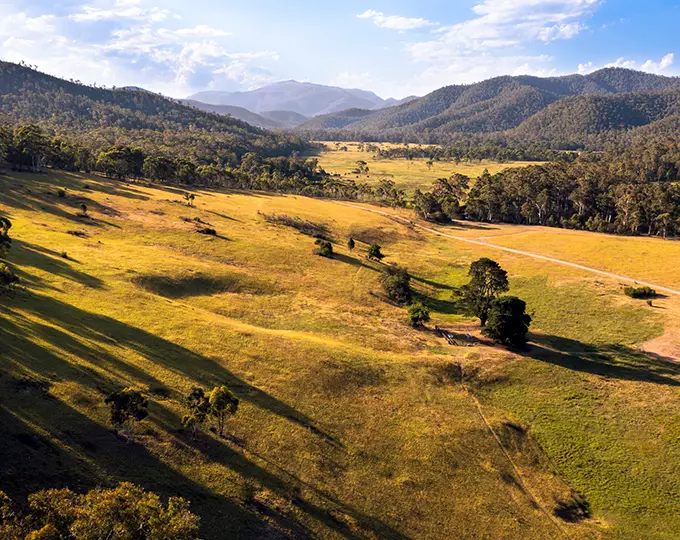
Detailed project design
If the feasibility assessment indicates that a project is viable, Landcare Australia will work with you to complete a detailed project design in preparation for project registration submission with the CER. Project design includes analysing the following:
- Project area, carbon estimation areas
- FullCAM modelling
- Site characteristics
- Planting layouts
- Species selection
- Site preparation
- Reforestation management Plan
Stage 2: Registration
The project must be registered with the ACCU scheme to be able to claim carbon credits.
This involves submission of key project details and documentation. Landcare Australia can assist to make sure all information is compliant with the method.
The key information that will be submitted includes:
- The Reforestation Management Plan
- Geographic information, including geospatial files (e.g. CEAs and exclusion areas)
- Evidence of the land’s eligibility against method requirements. E.g. historical satellite imagery showing the project areas has been cleared of forest for at least 5 years.
- A forward abatement estimate of the total amount of GHG emissions it will avoid or carbon it will store in tonnes of CO2-e over its crediting period. This will determine the project’s audit schedule.
- A Permanence Plan showing how the project will mitigate risks of tree loss (e.g. from fire) for the permanence period.
- Evidence of legal right and eligible interest holder consent
- Evidence that the project proponents is experienced and fit to run an ACCU Scheme project.
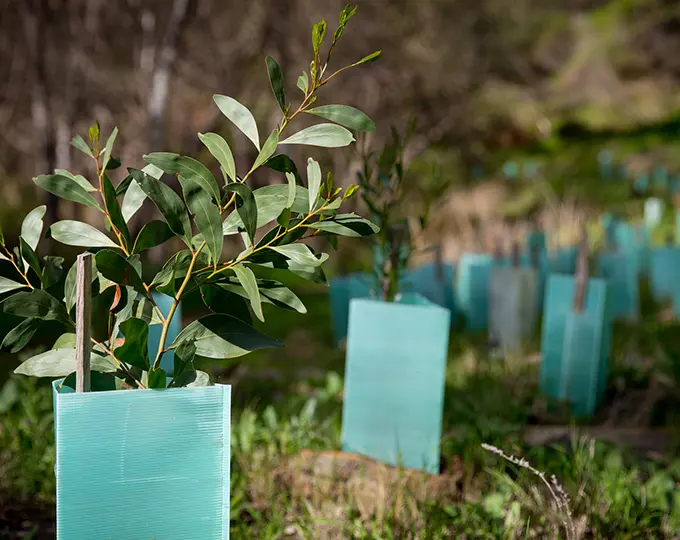
Eligible interest holders
For vegetation projects, it is a requirement that consent is provided from any ‘eligible interest holders’, and that any necessary regulatory approvals are obtained. This should be completed prior to the declaration of an eligible project by the Regulator. However, in some cases, the Regulator may declare a project on the condition that these requirements are met before the end of the first reporting period for the project.
An eligible interest-holder is any person or organisation that has a legal interest in the land subject to the project. They might include:
- landholders
- banks or mortgagees
- state and territory
- Crown Lands Ministers
- registered native title bodies corporate (e.g. First Nations Groups).
The eligible interest-holder needs to make sure they understand what is being agreed to as once consent is provided, it cannot be withdrawn. More information can be found on the CER website.

Key timing to consider
Landcare Australia will work with you on key project timing during the registration phase, including:
- Owning seeds/seedlings before applying to register a project and preparing the land for planting between applying to register and registration.
- No planting is allowed before the project is registered with the CER. Project registration can take upwards of 90 days.

Stage 3: Implementation


Once the planning of your project is complete, it is time to implement the activities in the Project Plan.
Implementation includes:
- Seed collection and plant propagation
- 6-12 months before planting
- Site preparation
- Soil ripping: after first autumn rains
- Weed control pre-treatment: autumn
- Planting
- Direct seeding or tubestock planting
- June-September
- Maintenance
- Weed control, pest control, replanting
- 3-5 years after planting until trees established
- Permanence
- Maintain forest cover
- Minimum 25 years
Best practice planting and maintenance of trees:
- Seed collection orders need to be in place before the planting season commences.
- Site preparation prior to planting to address site and soil constraints. This may include surface or ground water management, scalping, spraying, mounding, or ripping.
- When direct seeding, application of residual and pre-emergent herbicides can adversely impact germination so ensure the soil is not contaminated prior to planting.
- Complete weed and pest control prior to planting. Weed and pest control can be discussed with Natural Resource Management (NRM) or Landcare groups, local government or private contractors. Ensure controls follow Integrated Pest and Weed Management principles.
- Determine the requirements for tree planters, a specialised seeder or handplanting (i.e., Pottiputki tree planters, seedling buckets). Sources of equipment includes local governments, farm tree nurseries, landcare groups, and private contractors.
- Regularly consult with seedling and seed suppliers prior to the planting activities to identify any short fall and substitution options.
- Develop maintenance programs for weed and pests (vertebrate and invertebrate). Red-legged earth mites, rabbits, and other species can have significant, rapid impact on seedlings. Allow time for pest control permits.
- The impact of kangaroos may be reduced with fencing and tree guards. Talk to your local biosecurity group or local government. (NB: kangaroos are a protected species.)
- Reviewing and adapting the project plan – remain flexible to accommodate supply or skills shortages, the weather, and the demands of your farm business. Some activities are implemented over several years.

Maintaining forest cover
Maintaining forest cover for the crediting period (25 years)- known as the permanence obligation is a requirement of the ACCU scheme. This includes the development of a Permanence plan31 that includes any management actions that have or will be undertaken to prevent the risk of fire starting and spreading on project areas, including the frequency and scale of these actions.
Refer to the CER’s reducing the risk of fire and preserving sequestered carbon in vegetation projects guidance document to further understand the requirements.
If a reversal event occurs (e.g. a fire) in a project area which releases stored carbon back into the atmosphere, the CER must be notified within 60 days. In the event this happens, there are two options available:
- Manage regrowth to allow carbon stocks to return to their previously reported levels; or
- Relinquish ACCUs equivalent to the loss of carbon to the Clean Energy Regulator.
See CER permanence obligations for more information.

Stage 4: Ongoing Management

Measurement
Learn how to track carbon with FullCAM, the importance of monitoring tree health early, and consider long-term biodiversity for premium credits.

Reporting & Auditing
Learn about the mandatory reporting and carbon accounting needed to receive carbon credits, plus the compliance audits involved.

Management Activities
Understand activity limits in reforestation: biomass removal, grazing, thinning, and inputs like lime/fertiliser all have guidelines and require records.
Stage 5: Crediting
Once the first audit is complete, the verified report is issued to the CER. This report includes all necessary documentation and evidence supporting the carbon sequestration claims.
- Assessment by the CER: The CER reviews the submitted report and verification documents. They assess the project’s compliance with the methodology and the accuracy of the reported data. If the CER identifies any issues or requires additional information, they will request clarification or further evidence from the project proponent.
- Issuance of ACCUs: Upon successful assessment, the CER issues ACCUs based on the verified amount of carbon sequestered by the project. The number of ACCUs issued corresponds to the net greenhouse gas abatement achieved.
- Registration of ACCUs: The issued ACCUs are registered in the ANREU. This registry tracks the ownership and transfer of ACCUs. Project proponents can then use them against their own on-farm emissions or trade them as offsets on the carbon market.
Reporting and crediting cycle repeats until the end of the crediting period (typically 25 years).
